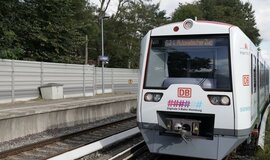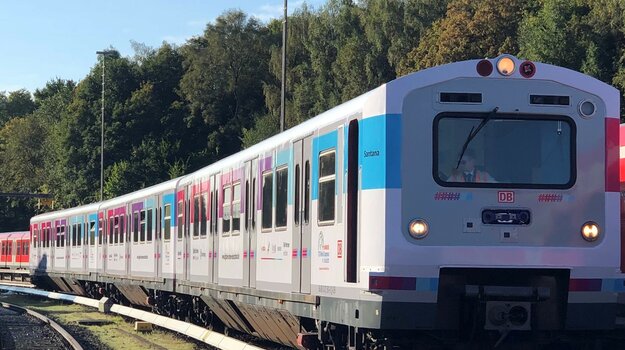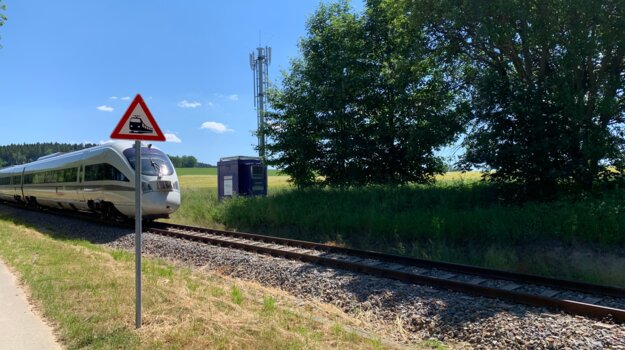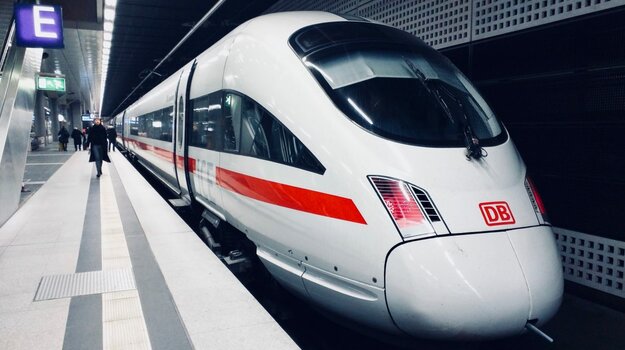
Digital S-Bahn Hamburg: first highly automated S-Bahn in passenger service
Even more efficient and environmentally friendly through the Hanseatic city
Understanding the Digital S-Bahn Hamburg
The very pioneering first project of Digitale Schiene Deutschland is ‘Digital S-Bahn Hamburg’. Demand for local public transport, especially in metropolitan areas, has been rising sharply for years. To create the extra capacity needed for these service improvements, S-Bahn operations must be digitalised. Already in July 2018, Hamburg entered into a partnership with Deutsche Bahn and Siemens Mobility to do just that. The pilot project for Hamburg's Digital S-Bahn showcases how new technologies can help improve the performance of local public transport in growing cities.
At its core, the project tightly integrates rail infrastructure with rail vehicles by leveraging the European Train Control System (ETCS) and automatic train operation (ATO) system. The aims was not only to establish the technical and operating prerequisites for the use of ATO over ETCS, but also to secure approval for the new technology so that it can be deployed in regular passenger services in Germany for the first time. This represents a major milestone for the introduction of ATO for the german railway network and the railway sector as a whole.
DB and Siemens presented the first four fitted trains at the ITS World Congress in October 2021. On a specially equipped 23-kilometer route between the stations Berliner Tor and Bergedorf/Aumühle, one of the trains on the S21 line ran in highly automated passenger service several times a day. All four converted trains of the 474 series have been in regular passenger service since September 2022. In the future, existing vehicles of the 474 series and 64 further vehicles of the new 490 series will be equipped with "ATO over ETCS".
Highly automated rail operations bring numerous advantages: The headway on the line can be significantly shortened if the whole network is equipped - without having to rebuild a meter of track. Automated acceleration and braking uses less energy and leads to a greater energy efficiency. Overall train operation will be more reliable and stable.
Starting, accelerating, braking, stopping: these highly automated trains will do all this by themselves. On the specially equipped 23-kilometer route train drivers will remain in the cab to monitor the train and will take control only if an incident arises. In addition, the four trains will operate in fully automated mode completly without train driver when moving to the stabling sidings or transitioning to the platform at Bergedorf station. During these manoeuvres, the S-Bahn's journey will be monitored from the signal box from the new role of “remote train driver”. A graphical user interface informs the remote train driver about the current state of the driverless vehicle (such as its position or speed). The trains also feature doors which open and close automatically at station platforms. This meant installing new sensors and components for door operation.
Digital technologies at work – ATO over ETCS
The technology underpinning the project's implementation is based on the European Train Control System (ETCS) and automatic train operation (ATO) system – two technologies whose interaction is being tested together here for the first time. To realise digital operations, the four suburban trains are being retrofitted: for example, with balise antennas, radars or ETCS, and ATO computers. The infrastructure along the line has also been upgraded with an updated interlocking system, revised signalling technology and Eurobalises. The electronic signalling system monitors points to ensure they are in the proper position and sets signals for the trains.The new ETCS computer in the signal box receives train control information, including signal commands and speed limits. The computer transmits the driving instructions by radio to the relevant trains, which it monitors continuously. In addition to the new radio block centre, ETCS also includes the balises installed along the track. These balises transmit additional static information, such as location, to each vehicle.
A radio signal is used to control the four trains. During ETCS operations, the train's onboard units communicate with trackside equipment via the GSM-R train radio standard, while a 4G network is used for communications during ATO operations. To enable trains to carry out fully automated shunting movements, which will be demonstrated during the ITS World Congress in Bergedorf in October 2021, a specially configured computer has been installed in each vehicle. This system uses a newly built 5G network for communications.
Trains carry onboard units for ETCS and ATO. As soon as a train is being monitored by ETCS, its driver can switch on ATO to activate highly automated driving. The train's onboard ATO unit receives current timetable information from the trackside ATO computer, and the vehicle's onboard ETCS computer grants permission to proceed. The ATO system uses this information to create an energy-optimised speed profile. Between Rothenburgsort and Berliner Tor, the driver will resume normal control of the train. The system is similar to the autopilot used in aviation. Train drivers always have the final authority, and they can take back control at any time.
World premiere at the ITS World Congress
On 11 October 2021, the time came to present Hamburg's Digital S-Bahn to the global public. Dr Richard Lutz, Chairman of the Management Board and CEO of DB, and Dr Roland Busch, President and CEO of Siemens AG, presented the Digital S-Bahn Hamburg project train alongside Dr. Peter Tschentscher, First Mayor of the Free and Hanseatic City of Hamburg, as it made its debut journey.
In addition to highly automated operation on the line to Bergedorf, the demonstration also included fully automated shunting at Bergedorf. Throughout the week, additional demonstration runs were offered to trade fair visitors as part of the ITS World Congress. Part of the so-called "Future Rail Experience Tour" was the Digital S-Bahn Hamburg project as well as its sister project Sensors4Rail. An average of 60 visitors took part in each guided demonstration run and gained a first-hand impression of the technology and new procedures.
Germany`s first automates railroad
With this project, the cooperation partners put Germany's first automated railroads on the tracks and showed that highly automated rail operations are feasible and have many advantages: Significantly more trains can run on the same line at higher capacity. At the same time, energy consumption is reduced and operations are significantly stabilized by automation. For this, the project was awarded the German Mobility Prize 2021. This intelligent solution shows how further rail networks in metropolitan areas can also be digitized in the future. Across Germany, a large proportion of trains and lines in local and long-distance transport could follow here in the next 15 to 20 years.




